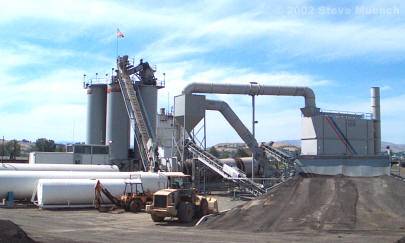Manufacturing
Each type of plant can produce the same types of HMA and neither type of plant should impart any significant plant-specific HMA characteristics. The choice of a batch or drum mix plant depends upon business factors such as purchase price, operating costs, production requirements and the need for flexibility in local markets; both are designed to produce quality HMA.
Batch Plants
Batch plants, which produce HMA in individual batches, are the older of the two types of HMA production facilities; it was not until the 1970s that drum plants became a popular HMA production option. Currently about 70 percent of all operational HMA plants in the U.S. are batch plants while only about 5 percent of all newly manufactured plants in the U.S. are batch plants (Roberts, et al., 1996). This means that as older batch plants are retired they are more than likely to be replaced by new drum plants, which can provide greater mobility and production capacity. Typical batch quantities range from 1.5 to 5 tons of HMA and each batch can take 15 – 45 seconds to make.

Figure 1: Batch Plant
Drum Plants
Drum plants, which produce HMA in a continuous manner, generally offer higher production rates than batch plants for comparable cost. Typical production rates for drum plants vary between about 100 tons/hr up to over 900 tons/hr depending upon drum design.

Figure 2: Drum Plant
Construction



